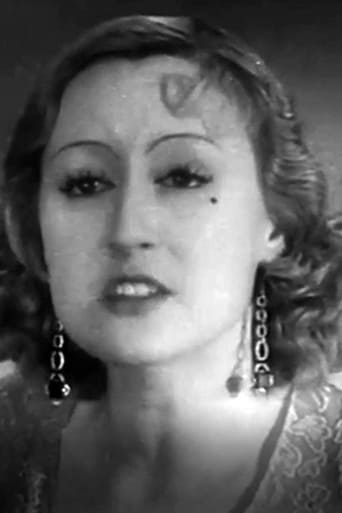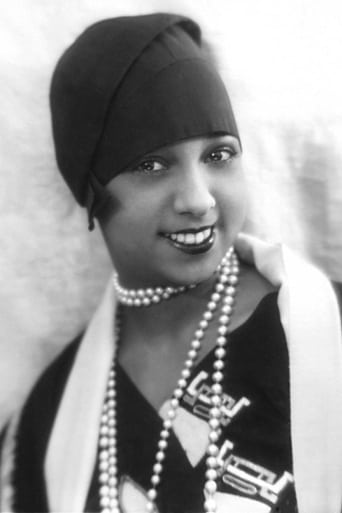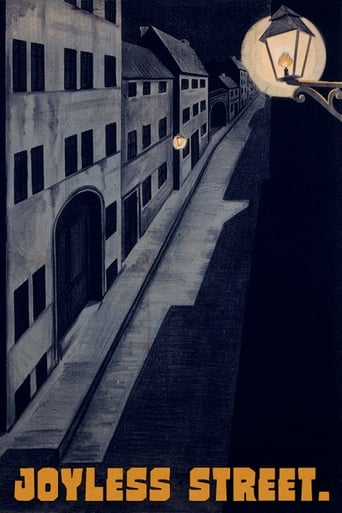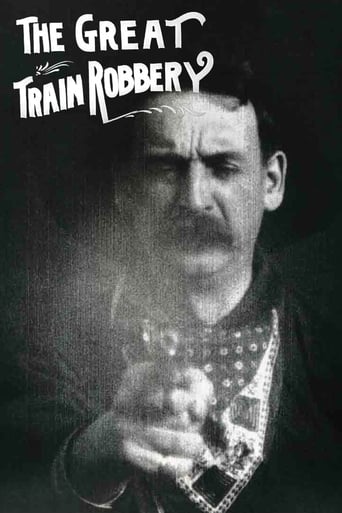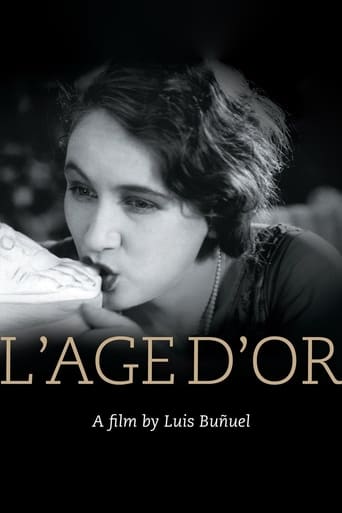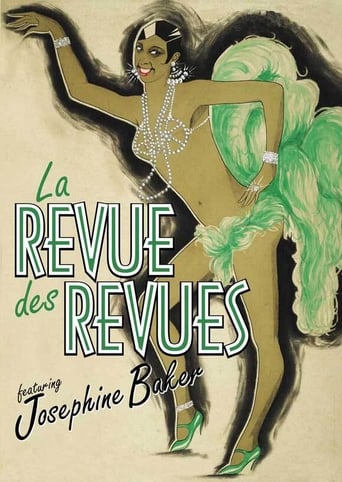

Parisian Pleasures (1927)
Gabrielle (Helene Hallier), an ambitious but innocent would-be young chorine, trumps a music hall publicity stunt to become the new Parisian nightclub Cinderella. But this lighter-than-champagne-bubbles story is only a pretext for LA REVUE DES REVUES's white-hot, non-stop procession of outrageously and scantily attired exotic dancers, showgirls, and acrobats.
Watch Trailer
Cast
Similar titles
Reviews
Good concept, poorly executed.
It's entirely possible that sending the audience out feeling lousy was intentional
The story, direction, characters, and writing/dialogue is akin to taking a tranquilizer shot to the neck, but everything else was so well done.
The film never slows down or bores, plunging from one harrowing sequence to the next.
LA REVUE DES REVUES (1927) is a fascinating train wreck of a film. First and foremost is the HIDEOUS modern score. And I mean HIDEOUS. 106 minutes of it. Thin narrative has a little sewing machine girl who wants to go on the stage. She tries to enter a "small feet" contest but is too late to sign up. She goes to one of the clubs and attracts the attention of its male star. He gets her into the show as a dancer. She also attracts the attention of an impresario who encourages her to try on the "Cinderella" show when the "small feet" winner's feet swell and the show comes to a halt. She becomes a star.Aside from this, the film is mainly a series of opulent, elaborate musical numbers featuring stars of various Paris clubs. Most famous is Josephine Baker, who appears in two numbers. These scenes are all hand tinted but statically shot from audience perspective. The numbers usually feature a "star" and about 20-30 others who pose or walk about the stage or dance. Most dance numbers are more dance movements of the Isadora type and many chorus girl numbers with simple dance routines. There's only one tap number. Baker does a spastic "funky chicken" dance in her first number, then redeems herself in the 2nd with a terrific post-Charleston / Shimmy sort of dance.Throughout all the numbers, this modern cacophony drones on and on. The only numbers that they even come close to matching are Baker's 2nd dance, and a Denishawn-type Egyptian number.Worth watching for the eye-popping stage numbers and Josephine Baker, but be prepared to hit the "mute" button.
I can agree that this movie now stands more as a historical document than a fully fledged fictional work. While there is a plot it's overwhelmed by the lengthy dance numbers featuring various stars of the day (i.e. Josephine Baker). This will interest anyone in costume history, early 20th century entertainment, dance or those interested in early film techniques.It should be noted that the color is not the 2 strip Technicolor process but is either created through hand tinting or more likely through a stencil tinting process called Pathécolor/Pathéchrome. You can that it is a tint versus being a color print as you can see many scenes where the color either doesn't line up the actual outlines of the image or where only certain areas of the screen are tinted.
This German Count has always boasted of, besides his dissipated and idle life, how transgressive the cinema pioneers could be when they took bold risks and that those talkies you liked so much are not original at all in comparison with the silent films. Here is a great example, "La Revue Des Revues," a perfect illustration of your grandfathers' boldness because this film is a silent musical.Obviously, such directors ignored the customary rules and recognized no barriers to their art.It's a simple story: a dressmaker becomes a Parisian music-hall star when she wins a bizarre contest, a kind of "Cinderella" reinterpretation in which the organizers are trying to find a girl with France's smallest feet (MEIN GOTT!!!... another incredible transgression and now with one of the most popular classic stories! We will not, however, take the time here to discuss aristocratic fetishism). This flimsy premise provides a perfect excuse to display a kind of collection of the greatest musical numbers being done during that year at the most important and emblematic Parisian theaters as the "Moulin Rouge", the "Folies Bergere" or the "Palace". These musical sequences are beautifully colored in a film restoration sponsored by "ARTE". We see, among "Art Decó" lavish settings, acrobats and many chorus-girls who wear magnificent and impossible motley and feather dresses. Standing out from all the others is the famous Josephine Baker who stars in two musical numbers.Alas though, there are too many musical numbers which makes the film slow and overlong. The director does not seem totally in control and the performances are lifeless. And now, if you'll allow me, I must temporarily take my leave because this German Count is remembering his early life and wants to dance a Charleston.
I could not be more pleased that Lobster Films in cooperation with various European cinematheques have seen fit to preserve this footage which is primarily a compilation of acts from the Folies Bergere and other Parisian variety shows. Included are two clips with Josephine Baker who was actually a pretty clunky dancer, but a larger than life personality. The framing story of a young girl hoping to hit it big in the business can be dismissed, as can the sub-plot of her claiming to be robbed in order to attract publicity. However, the early two-strip color filming of the various artistes is not to be missed by any one interested in the development of film techniques. It's a pity however that the orchestral score was so out of keeping with the period.

